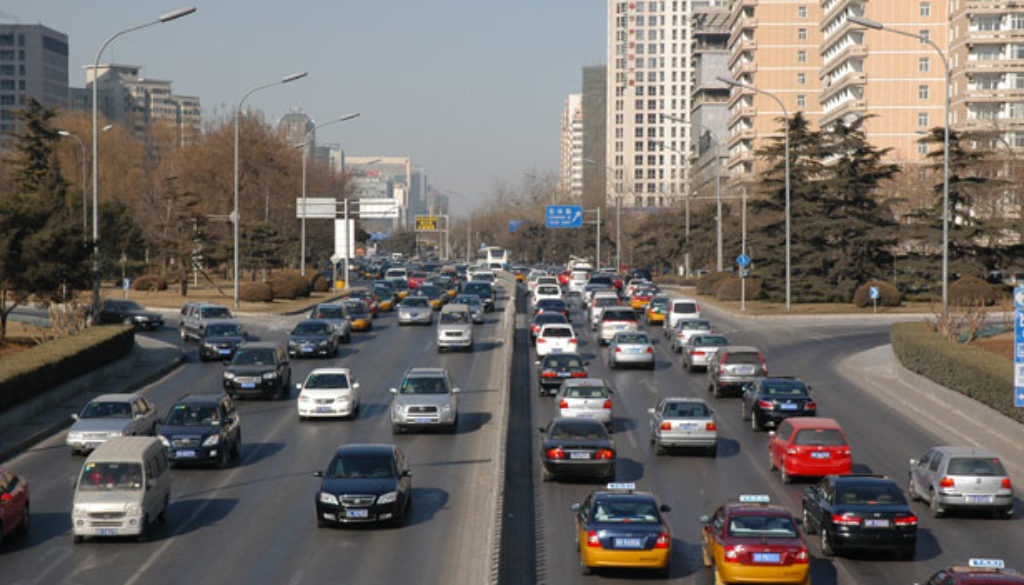Time Is Now for Carbon Pollution Standard for Transportation
By Deron Lovaas, Natural Resources Defense Council
Approaching the finish line last week, a record number of comments flooded in about the Federal Highway Administration’s proposal to measure congestion, and adopt new standards for tracking and ultimately reducing carbon pollution from transportation plans. About 5,000 of these opposed the set of congestion metrics included in the proposed rule, which would put a thumb on the scale in favor of cars as opposed to humans who drive them. And a whopping 80,000 were filed in support of the Administration moving forward with a carbon pollution standard in the final rule.
I’ve been working in the transportation field for about two decades, and I have never seen this level of interest in a proposal. The great news is the Federal Highway Administration has the expertise needed to draft a good, effective clean transportation standard—and push it across the finish line this year. It should.
This is a very popular idea, as Hart Research found in a survey of 800 registered voters in 12 states. 78 percent favor the idea, with support among millennials at an eye-popping 88 percent. This makes a lot of sense, given that these plans are required to span more than 20 years and that future belongs to the huge millennial generation.
What is also important to note, though, is that while many of those polled don’t know if their state transportation agency tracks carbon pollution from transportation plans, it would bother 77 percent of them “some, a fair amount or a great deal” if they discovered that’s not the case. People expect government agencies to track performance outcomes from long-term investment plans. It’s our money as taxpayers, after all. And yet the track record for tracking and reporting on performance of transportation plans is poor; breaking with that record is long overdue.
So it’s heartening to sift through the public comment docket and find support for this from many government officials. Nine state transportation agencies, for example, filed a substantial set of comments endorsing the proposal and offering advice about its structure and components. Separately, two state agencies—the California Air Resources Board and Caltrans—submitted detailed joint comments, as did the Colorado Department of Public Health and Environment. Two associations—the National Association of Clean Air Agencies and the Northeast States for Coordinated Air Use Management—representing local and state clean air agencies (such as the Maryland Department of Environment, my employer 20 years ago) offered substantial advice as well. And the Washington State House of Representatives filed a supportive letter as well.
Cities nationwide—more than 100—also fill out the docket with supportive comments. They are too numerous to list by name, and local officials from at least 23 states filed individual comments or signed onto letters filed by the U.S. Public Interest Research Group and the Mayors Innovation Project. And two associations that represent cities nationwide also filed supportive comments—the National Association of City Transportation Officials and the National League of Cities.
And many groups from the level of governance or coordination above cities, a little known set of institutions such as metropolitan planning organizations (MPOs) or transportation management associations, also filed constructive comments. The most noteworthy of these are comments filed jointly by 6 large California MPOs and the only MPO with an elected board, Portland Oregon’s Metro.
An array of non-governmental groups also sent supportive comments, many offering substantial advice to the Federal Highway Administration: American Public Health Association, Center for American Progress, Center for Neighborhood Technology, Conservation Colorado, Environmental Law and Policy Center, National Association of County & City Health Officials, Nature Conservancy, NextGen Climate America, Parks and Trails New York, Sierra Club, Southwest Energy Efficiency Project, as well as 52 groups that signed onto a letter circulated by NRDC.
Business and industry spoke out in favor of the proposal as well, including CEMEX (a global cement supplier), the U.S. Green Building Council and more than 190 business leaders—including Apple and Facebook—who signed onto an Environmental Entrepreneurs letter.
Of course, there was some predictable business opposition. Mostly from traditional transportation associations representing highway contractors. And there were several state transportation agency opponents. Many MPOs had an interesting but untenable position, one of favoring the concept but suggesting kicking the can down the road to another rulemaking.
As I said, this can and must be done by the current Federal Highway Administration team. Because climate change won’t wait. Because we the federal taxpayers expect this to be done already. And because within government agencies, both nationally and many states and metropolitan regions, we find the best practices and staff expertise necessary to get it done.
In addition to a large crowd of advisers at their disposal, as evidenced by a docket filled with substantive commentary from scores of experts and practitioners, the Federal Highway Administration team itself has the chops to get this done. Readers may be surprised or unfamiliar with that team, and I urge you to familiarize yourself with some of their recent work on their web site. They are all seasoned professionals who have already created and honed tools such as this one that local and state planners can use to comply with a new carbon pollution standard.
This can and must be finished by the current, top-notch Federal Highway Administration team. Let them get to work, with a record-breaking parade of support behind them.

